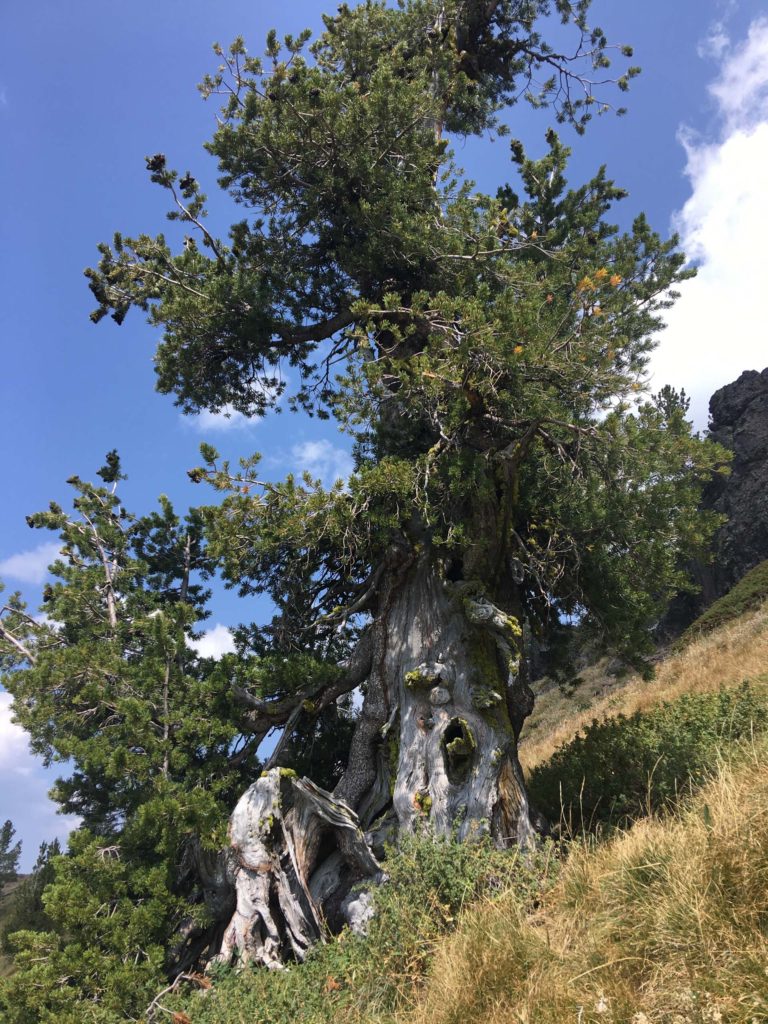
Dear Members:
A little rain, a little cooler… drought-tolerant autumn flowers are blooming, notably California brickellbush (Brickellia californica). Most native plants support wildlife in one way or another, but it is a delight to see the tiny moths attracted to brickellbush, and smell the plant’s strong night fragrance.
In the high mountains, whitebark pines (Pinus albicaulis) prepare for winter. This five-needle pine, in which the needles occur in “bundles” of five, does not occur below about 6,000 feet in elevation. Its major seed cachers and dispersers are birds such as Clark‘s Nutcracker (Nucifraga columbiana), which can each stash some 100,000 seeds per year! I have watched birds hammering the sappy cones open, shining droplets flying, to reach the seeds inside. The birds often do not eat all seeds in a cache, thus aiding the regeneration of the tree.
As I mentioned last month, due to water restrictions, Shasta Chapter CNPS will not be sponsoring a plant sale this fall, but will be working toward a sale in the spring.
Wishing you all good health and good adventures this fall.
~Susan Libonati-Barnes, President

